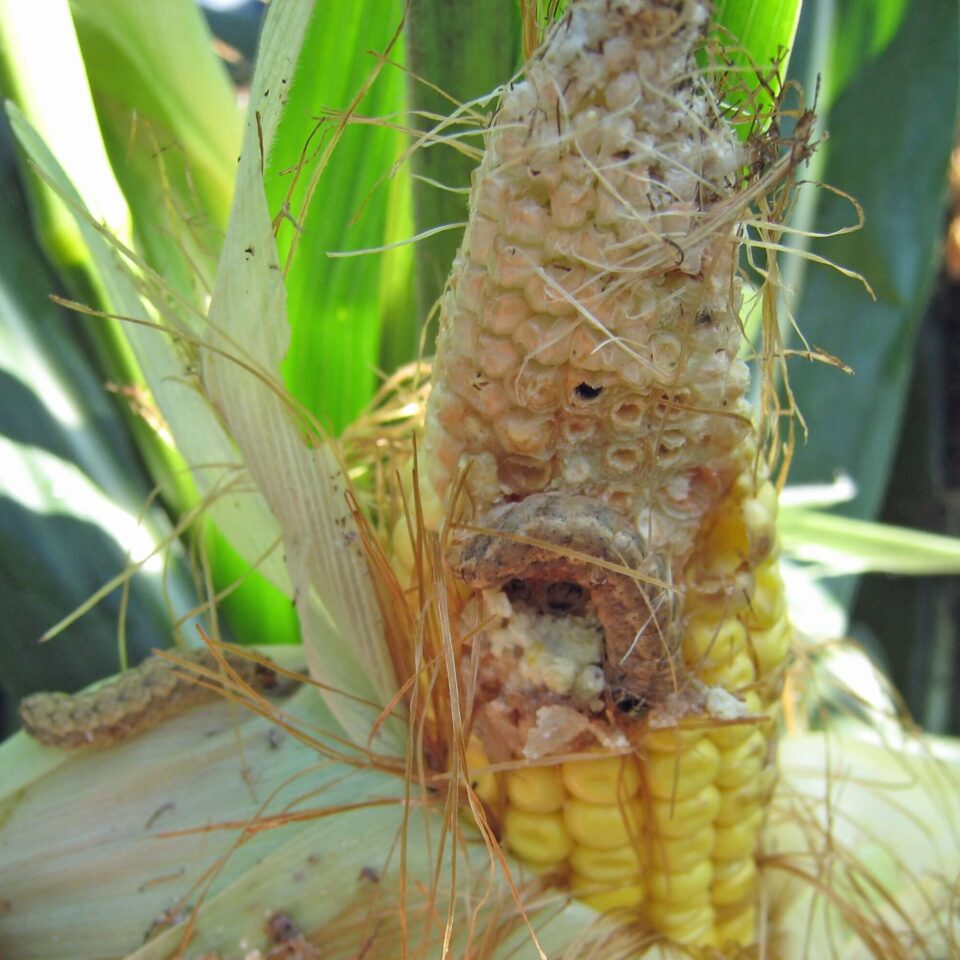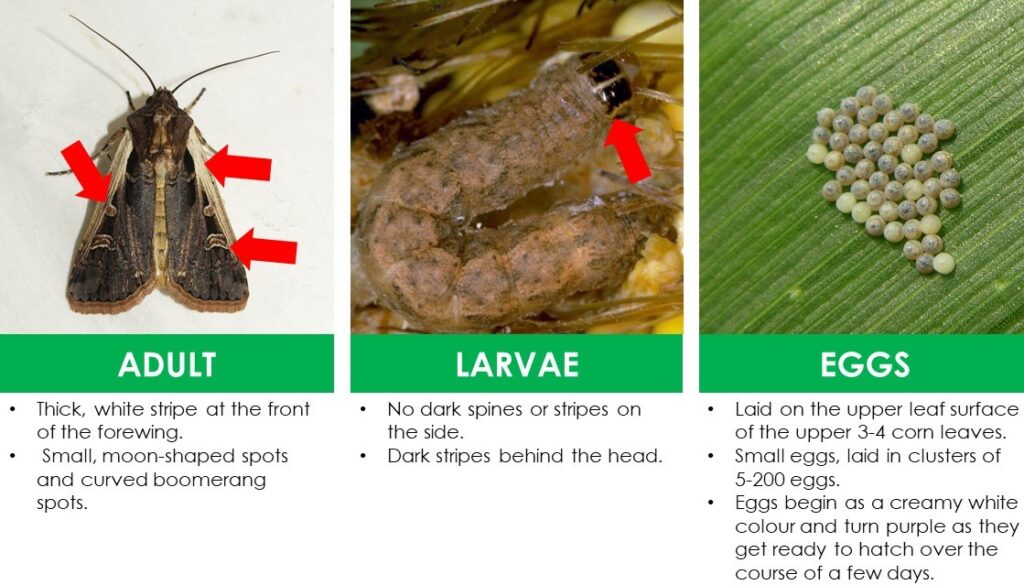
Why are they a concern?
The western bean cutworm is a damaging pest in corn and dry edible beans. In corn, they begin to feed on the tassels and silks until they are large enough to tunnel into the ear and feed extensively on the kernels. This can cause a reduction in pollination, yield and quality of the crop. The ear feeding can also lead to the development of ear rots later in the season. Multiple larvae are able to feed on the same ear. In edible beans, the larvae begin feeding on the leaves and later move to the pods and seeds once they are bigger.

ABOVE: Identification tips at the different growth stages of the insect.
Image Sources: Iliona L, Bugwood, Field Crop News
Expert Tips on How to Scout Your Field
- To start, scout 20 plants in five different areas of the field from early June to the end of August.
- Look for egg masses and young larvae on the upper 3-4 leaves of the corn.
- It is important to identify the age of the eggs found as knowing when they are to hatch ensures the timing of the insecticide application is effective. For instance, the most effective application is when young larvae are active.
- The use of pheromone traps help to monitor peak moth flight, which is an indicator of when to begin the scouting process. .
- Scouting for WBC egg masses in dry beans is very difficult. Instead, scout for pod feeding 10-20 days after peak moth flight.

ABOVE: The stages of Western Bean Cutworm eggs.
Image Source: CornPest
Thresholds for Corn
Spray is warranted if an accumulated 5% of the plants have eggs masses. Example: if 1st scouting walk found 2% of plants have eggs and 2nd walk found 3% of plants have eggs, then control is necessary. Aim to spray when more than 50% of eggs have hatched.
Thresholds for Dry Beans
If the accumulated catch is between 700 and 1,000 moths, damage risk to beans is moderate and beans must be scouted closely. Check fields for larval feeding 10-20 days after the peak flight, and spray if pod feeding is found. If the catch exceeds 1,000 moths by the peak, risk is high for damage in dry bean and an insecticide application is needed 10-20 days after peak flight. Spray any edible bean field that is neighbouring a corn field that has reached threshold for WBC.
Management Strategies
- Insecticide application timing is critical; once larvae have entered the ear, control of western bean cutworm will not be achieved.
- Matador, Coragen, and Voliam Xpress are registered for control in corn and dry beans.
- Delegate and Decis are registered for control in corn only.
- Deep tillage can disturb and kill overwintering larvae in the soil.
Featured Image: RealAgriculture
Additional Sources: Corn Pest